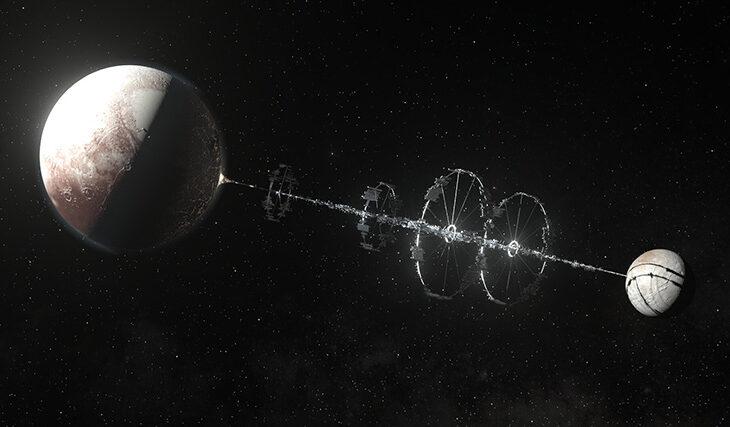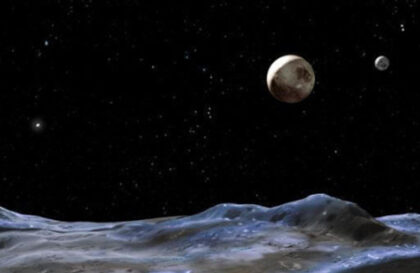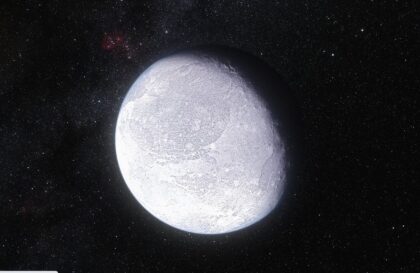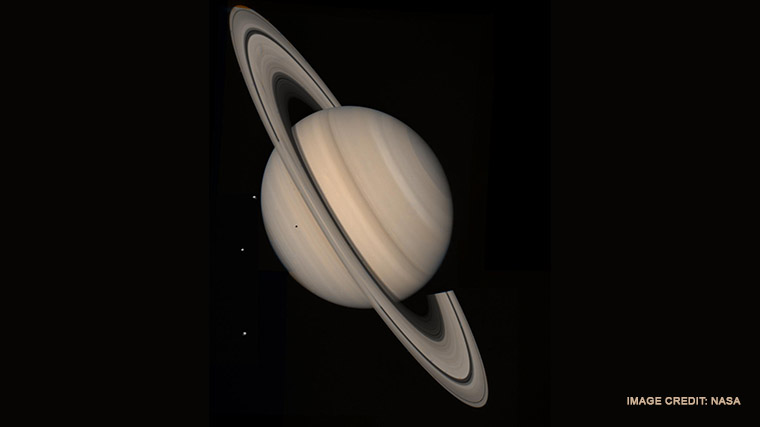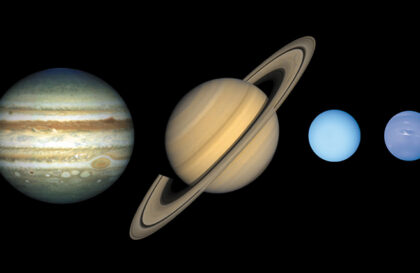Pluto is small, but you can place the entire population of the Earth there. The surface area of Pluto is more than eight times smaller than the Earth’s land area and is approximately equal to the area of Russia.
What is the surface of Pluto?
Water ice at Pluto’s temperatures is very durable; from this, the mountains surrounding the plains, about 3 km high, are made.
On the surface of Pluto and in its depths, there is a large amount of ice, not only water. Frozen millions, if not billions, of years ago, the ice is so strong that it can be compared to steel. The thickness of the ice layer is 100-180 km. But in the equator region, it still slowly evaporates under the influence of sunlight (which Pluto receives about 1600 times less than us), and in those places where this happens, amazing-looking mountains with razor-sharp edges are formed.
The surface of Pluto is very heterogeneous. This can even be seen in images taken by the Hubble Telescope and was later confirmed by much better photographs from the New Horizons probe.
The resort for the rich
in Pluto has a mega eco-friendly environment and no industry. This is an excellent resort for rich people because the flight cost will be measured in figures with six zeros. Flight duration up to 10 years. That’s 4,5 billion kilometers.
What can you do there?
Skiing on methane snow The Tenzing Montes are an icy mountain range up to 3.4 kilometers high on the dwarf planet Pluto. It frames the Sputnik Plain from the southwest.
Skate on ice, hold hockey matches on the Heart of Pluto in the Tombaugh region measuring 1800×1500 km or on the Sputnik Plain measuring more than 1000 km, occupying 5% of its surface.
Pluto is an ideal place for research centers.
Pluto has low gravity, and people with musculoskeletal problems will find it very comfortable to be in rehabilitation centers.
This is a perfect location for data centers. It is freezing and does not require colossal cooling power.
Pluto is an excellent cryo chamber for research and storage of biomaterials.
Magnetic levitation transport, using the phenomenon of superconductivity, is the most popular here.
Research centers can be located there to study and apply the phenomenon of superfluidity (when there is no friction of the liquid against the walls of a vessel or pipe). Big plans are associated with it to create quantum simulators, quantum computers, and experimental modeling of exotic states of matter.
A space elevator is possible on Pluto. A cable can connect Charon (a moon of Pluto) to Pluto, and the cable can be used as a winch to transport cargo and passengers between Pluto and Charon. The result will be something like a funicular.
From Pluto’s surface, Charon appears as a disk about seven times larger than the moon’s apparent size in Earth’s sky. The unique orbital characteristics of Pluto and Charon create exciting opportunities for future development of similar technology. If you stand on Pluto’s equator, Charon will always be at the zenith, directly overhead. This provides a unique opportunity to extend a space elevator between them.
How long will people live on Pluto?
People on Pluto will live at least four times longer, i.e., up to 300-320 years.
Experts from the Space Technologies consortium claim that human life expectancy can quadruple with gravity equal to half that of Earth. This is due to a slowdown in the aging gene and an increase in neurons and the endocrine system activity. To maintain health in such conditions, adhering to a specific diet, providing sterile conditions, and performing regular exercise are necessary.
These conclusions are based on a mathematical model that estimates life expectancy in reduced gravity conditions. The Center also made similar predictions for the Study of Aging at Louisiana State University in the USA.
How many people can you live on Pluto?
The entire population of the Earth. The population density will be 440 people/km2, approximately the same as in the Netherlands.
For comparison, the population density in New York is 10,194.2 people/sq.km, Moscow is 4,950 people/sq.km. The most populous country in the world is Monaco, with a population density of 16,205 people/sq.km.
What will people be like when they acclimatize to life on Pluto?
They will be characterized by high body density, significant development of musculoskeletal mass, and a strong skeleton, like the indigenous population of the Far North.
Physiological adaptations include a high ventilation capacity of the lungs, an increased hemoglobin content in the blood, an extraordinary ability to oxidize fats, improved energy processes and thermoregulatory properties, and a higher stability of the metabolic rate in hypothermia conditions.
The distinguishing morphophysiological adaptations of the aborigines of the Arctic zone also include:
- Greater filling of blood tissues and its more intense circulation.
- Increased heat production and basal metabolism.
- Weak skin sensitivity of the face and hands to temperature stimuli, particularly cold.
What will people fight for?
For oxygen, water, and energy sources.
Banner image: Credit: Artstation
Image credit:
https://www.artstation.com
